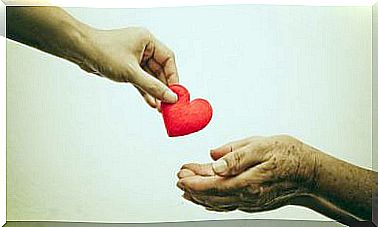Group Cohesion: The Relationship Between Cohesion And Performance

There are many elements that characterize the structure of a group, from order, hierarchical distribution or relations of power, influence, prestige and differentiation. Although most people know this, the truth is that the operation of the group is based on the distribution and configuration of certain elements, such as roles, norms and group cohesion, whose role is more covert, but which are postulated like “the sauce” that turns a mere aggregate of people into a group.
Thus, people can unite, form a conglomerate of people and call themselves a group. This, however, does not make it a persian group, since this requires a shared identity, structure and interdependence. Based on these variables, group cohesion will be different.
Therefore, cohesion is the “glue” of the group. There are several types of cohesion that can appear in a group:
- Cohesion by personal attraction: this cohesion is based on the characteristic of interdependence, defined as the force that holds group members together as a result of the mutual interest and attractiveness of group members. This cohesion could occur between friends from school or high school.
- Cohesion by goals: this type of cohesion is based on the idea of wanting to stay in a group due to its ability to help us achieve objectives. These goals are often posited as difficult to achieve outside the group. In this case, people remain in the group as long as there are certain tasks and interests. This cohesion can exist in work environments, for example.
- Cohesion by group attraction : in other groups, cohesion can be based on how interesting or attractive the activities carried out by that group are. In this case, the familiarity with the group or the goals that can be achieved with it does not matter; There is cohesion because people like the organization of the group, its work … and they want to stay for it. This cohesion can appear in companies that we like, beyond personal goals or objectives, in NGOs … etc.

The paradigms of group cohesion
Being the world a very globalized place, with large companies developing by leaps and bounds, the truth is that sometimes important elements of individual and group psychology are lost in favor of greater benefits.
The company and its great executives seek the highest possible performance from their workers, but sometimes they do it through tools or in scenarios that do not work, where the elements to be enhanced are not fully refined or incorporated. This could be the case for group cohesion.
Rushing and poor organization can allow a conglomerate of people to work together to obtain the best results. Although incentives can be offered for this to be the case, it seems a wise solution to study the relationship between group cohesion and performance, to find out if this independent variable would modify the dependent one.
For this, we are going to talk about group cohesion based on interdependence, shared identity and structure. There are paradigms that shape the idea of group cohesion, managing to explain it through experiments that can help us conclude that cohesion is very relevant to predict behavior, and therefore performance, of people.
The minimal group paradigm: shared identity
In the minimal group paradigm (Tajfel et al., 1971), the following question was posed:
People were divided into two groups — the Klee group and the Kandinsky group — without first knowing each other. Such an experiment wanted to observe if people, despite not knowing each other, simply because they were placed in the same group, would favor the members of that group for having activated their social identity, their identity within the group.
The answer was affirmative. 77 percent of people chose the option that benefited their group over the other. 15 percent acted fairly. However, it was observed that the general tendency was to systematically favor people in the group, regardless of whether the other was harmed.
Through the minimal group paradigm, cohesion is explained from the social category. In this sense, the fact that several people who belong to a group perceive themselves as part of it already seems to be a sufficient differentiating element for a group to form.
Theory of social identity: the self-concept as regulator of everything
Tajfel returns to study group cohesion from the analysis that plays another important variable within personal psychology: self-concept. Self-concept is defined by the meaning we have of ourselves. This personal self-concept has two aspects:
- Personal identity : part of the self-concept that derives from meanings and emotions, from personal emotional experience and from the most intimate aspects of each one.
- Social identity : it is related to the part of our self-concept that derives from belonging to social groups, together with the evaluative meaning and the emotional meaning associated with it. Understood in another way, some aspects of the image or the meaning that people have of themselves come from their belonging to certain groups or social categories.
Being a basic need to maintain a social identity as positive as possible, group membership is also defined by the search for positive aspects of our identity. The aspects of the group that contribute to having an adequate identity are neither positive nor negative in themselves, but they can be so compared to the attributes of other groups.
From this theory, group cohesion would emanate from the need to maintain self-concept and know that the group nurtures that self-concept in a positive way.

The relationship between cohesion and group performance
From the studies and experiments carried out by social psychology, and knowing the reason for group cohesion in certain groups, we can reach some conclusions about the relationship between cohesion and group performance.
According to the needs satisfaction model, group cohesion does not precede performance at work carried out by the group; instead, it does seem to work the other way around. Performance promotes cohesion. If a political party wins the elections in a country, cohesion in that group is likely to increase from the good results.
Is there therefore a relationship between the two?
The data suggest the following conclusions:
- There is a significant relationship between cohesion and performance or productivity.
- Such a relationship occurs especially in natural groups or in small groups.
- Groups that require a high degree of interaction for effective execution are not those that show a greater relationship between cohesion and execution.
- Commitment to the task is the component that best explains the relationship between cohesion and productivity. Interpersonal attraction and attraction to the group play a more secondary role.
- The direction of the effect is greater from yield to cohesion, than vice versa – as explained above.
Group cohesion is at the base of group phenomena, such as interaction, norms, pressure, conformity, group identity, groupthink, performance, power and leadership or the group atmosphere.
The greater the cohesion, it seems that the greater the pressure or influence of the group on its members, both in social-emotional aspects and in those related to tasks. On the other hand, the attraction that gives rise to cohesion, and later to the ability to influence, can be an attraction fueled by the personal characteristics of the members, by objectives or by group tasks.









